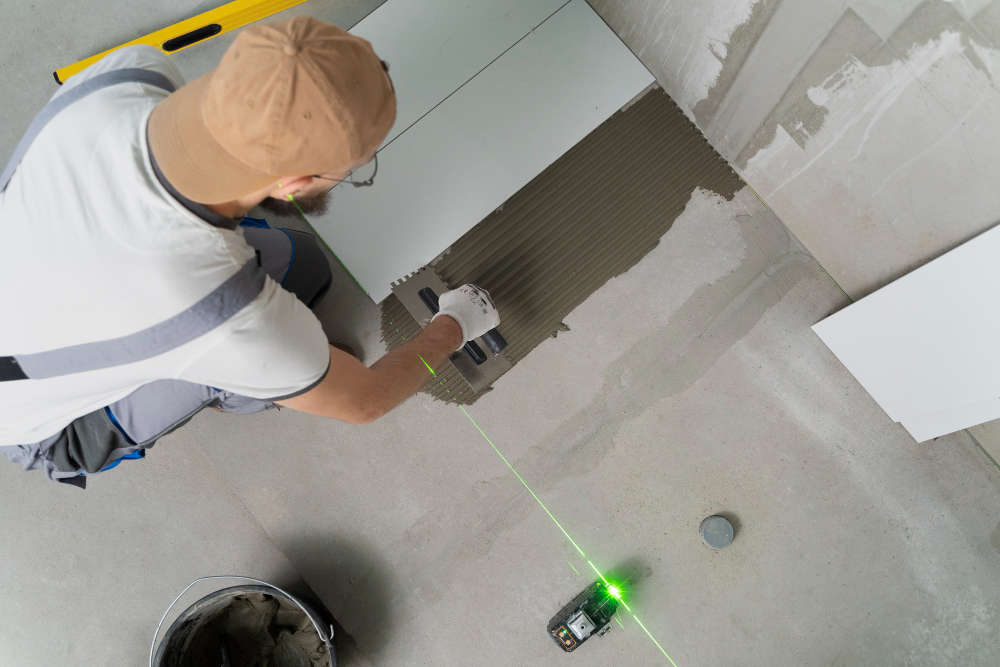Floors not only support your home but also add warmth, style, and value to every space. When they start to show signs of damage, it can affect both safety and appearance. Timely Floor Repair helps prevent bigger issues like uneven surfaces, water damage, and costly replacements, keeping your home comfortable and attractive for years.
Ignoring minor floor problems can lead to more serious damage over time. Cracks may spread, tiles can loosen, and wood might warp from moisture. Investing in early Floor Repair in Roseville not only saves money but also extends the life of your flooring, ensuring your home stays safe, stable, and visually appealing.
Why Choosing the Right Materials Matters
Picking the right materials makes a big difference in how long your floors last. The wrong materials can cause uneven spots or colors that don’t match. The right ones will blend well and help your floor stay strong for years.
Professional Floor Repair experts check your floor type, the damage, and the area before picking the best products. Below are some of the most trusted materials used for different floor types.
1. Hardwood Floor Repair Materials
Best Materials for Hardwood Floors
Hardwood floors are warm and classic, but they can get dents, scratches, and small gaps. To fix them, professionals use:
- Wood Fillers: Perfect for small cracks or nail holes. They come in many colors to match the wood.
- Sanding and Finishing Compounds: Used to smooth uneven areas before sealing.
- Replacement Planks: When the damage is bad, replacing one or two planks keeps the floor looking natural.
High-quality wood fillers and sealants make the repair last longer. With skilled Floor Repair work, the floor will look as good as new.
2. Laminate Floor Repair Materials
Top Products for Laminate Repair
Laminate floors are strong and budget-friendly, but they can still chip or lift. To fix them, professionals often use:
- Laminate Repair Kits: Come with color-matched putty to fill chips or small holes.
- Replacement Boards: Damaged boards can be swapped out without changing the whole floor.
- Adhesive Sealants: Used to glue down lifted edges and stop moisture from getting in.
Using the right laminate materials helps your floor stay flat, smooth, and water-resistant.
3. Tile Floor Repair Materials
Best Materials for Tile Repair
Tile floors look great and last long, but cracks or loose tiles can cause problems. For tile Floor Repair, experts use:
- Epoxy Adhesive: Bonds loose or broken tiles firmly.
- Grout and Sealant: Fills the spaces between tiles and stops water from seeping in.
- Replacement Tiles: Used when cracks are too big to fix.
The right materials and tools can make even old tiles look fresh and strong again.
4. Vinyl and Linoleum Floor Repair Materials
Easy Fixes for Vinyl and Linoleum
Vinyl and linoleum are affordable and tough, but they can bubble or tear. To fix them, professionals use:
- Vinyl Patch Kits: These fill small tears or holes with color that matches the floor.
- Seam Sealers: Reseal edges to stop peeling or water damage.
- Adhesive Rollers: Smooth out bubbles and keep the floor flat.
These materials are quick to apply and give a clean, lasting finish.
5. Concrete Floor Repair Materials
Strong Solutions for Concrete Floors
Concrete floors are common in garages, basements, and shops. Over time, they can crack or chip. The best Floor Repair materials for concrete include:
- Epoxy Resin: Fills cracks and adds strength.
- Polyurethane Sealants: Protects against water and wear.
- Self-Leveling Compounds: Smooths uneven spots before finishing.
These materials give concrete floors a long-lasting, even surface.
Tips for Choosing Good Repair Materials
How to Get the Best Results
Choosing the right materials is key to lasting repairs. Here are a few simple tips:
- Match the Floor Type: Use products made for your floor material.
- Think Long-Term: Pick strong, durable products—not quick fixes.
- Check Compatibility: Make sure sealants and fillers match your floor’s finish.
- Ask a Pro: Talk to local Floor Repair in Roseville experts for the best advice.
- Prep Properly: Clean and smooth the surface before applying any repair material.
The Role of Professionals in Floor Repair
Why Experts Are Worth It
DIY fixes can handle minor issues, but big damage needs professionals. Trained technicians know what materials and tools to use for perfect results. They save time, prevent mistakes, and ensure your floors stay safe and strong.
Experts can also handle deeper issues like subfloor damage, moisture problems, and leveling—things that can be hard to fix on your own.
Maintaining Your Floors After Repair
Simple Ways to Keep Floors Looking New
Once your Floor Repair is done, proper care keeps it looking great. Use soft pads under furniture, clean with gentle products, and keep your home’s humidity steady.
Regular checks help you catch minor issues before they become expensive repairs. Whether your floor is wood, tile, or concrete, regular care keeps it in top shape.
Conclusion
Choosing the best materials for Floor Repair in Roseville helps your floors last longer and look better. From wood fillers to epoxy sealants, every product plays a part in keeping your home safe and beautiful. If you’re searching online for Floor Repair near me, trust Bobs Handyman and Hauling Services. Their skilled team uses quality materials and proven methods to deliver strong, stylish, and long-lasting results for every floor.
